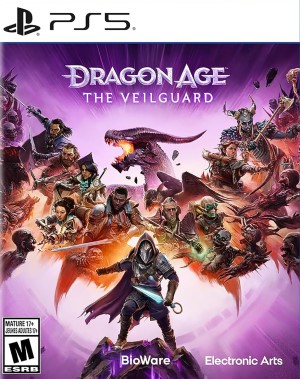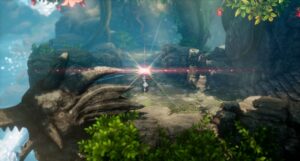
The Bioware as we knew it from the Mass Effect days is gone, but the studio may have life in it yet. Anthem’s disastrous launch spelled the downfall of the once beloved RPG studio, with a trend-chasing focus on live-service, something entirely out of the blue for them up to that point. Mass Effect Andromeda’s prevalent bugs and a mediocre story left fans disappointed. Bioware needs a win right now, and that win needs to be Dragan Age: The Veilguard. With a rocky development spanning 10 years, The Veilguard is finally right around the corner with an October 31s release. Bioware is even confident enough to give hands-on previews to media, along with a bevy of gameplay videos. While The Veilguard may not be the Dragon Age you recognize at first glance, it does have potential to be Bioware’s most exciting game in a long time. Here’s why Dragon Age: The Veilguard may be one of the biggest games of the year.
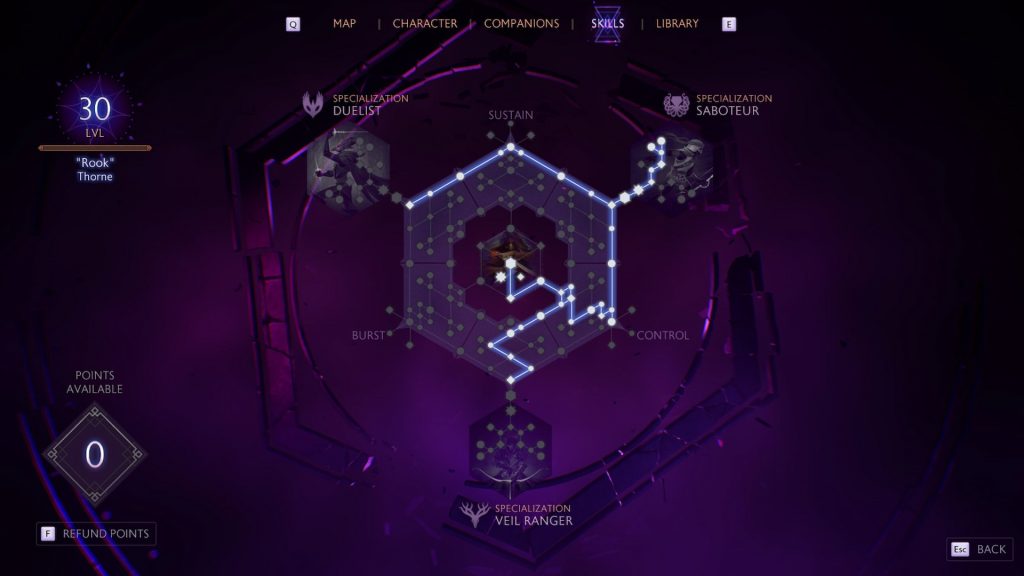
Right off the bat, the most immediate shift from previous DA games, aside from art style, is the real-time action combat. Inquisition started the shift from tactical DnD-derived combat to a more action oriented approach, yet it still kept role-playing elements like full party control and pause and point gameplay with a classic top-down perspective. The Veilguard goes further than Inquisition with its action combat, opting to eliminate player control of party members entirely. Bioware balanced the inability to directly control the party by giving the player, named Rook, more class options than ever before. You now have a larger specialization pool to branch out from your 3 starting classes, which form the tried and true Warrior, Mage, and Rogue roles. The Veilguard allows for a more self sufficient style of play without the need to constantly rely on party members to survive. But party strategy is still important here, it’s just more action oriented with ‘Combo Opportunities’ knocking out enemies with devasting team attacks. You can still equip your party members and guide their progression through their own skill trees, but The Veilguard takes a decidedly hands-off approach to party play in favor of seamless and smooth character action.
If you’ve played Inquisition, take a moment to remember how inhibited movement and attacks felt during combat in that game. Terrain often got in the way of your character’s actions, and movement in general felt stilted and inconsistent. Oh, and let’s not forget the long animation locks with certain attacks, further compounding the game’s pseudo action combat sluggishness. As much as I prefer the tactical pen and paper approach to combat like in Origins, sticking to one style and really dialing it in is preferred to the inelegant melding of both like Inquisition attempted.
From what we’ve seen of The Veilguard, combat is indeed smooth and seamless. You can chain combos with swiftness and no longer need to wait for clunky animations to play out only to be caught on terrain with your hits whiffing the air. Those who’ve played the game are pretty unanimous on how fast-paced the flow is, with parrying feeling more like the Batman Arkham games than the methodical Soulslike approach.
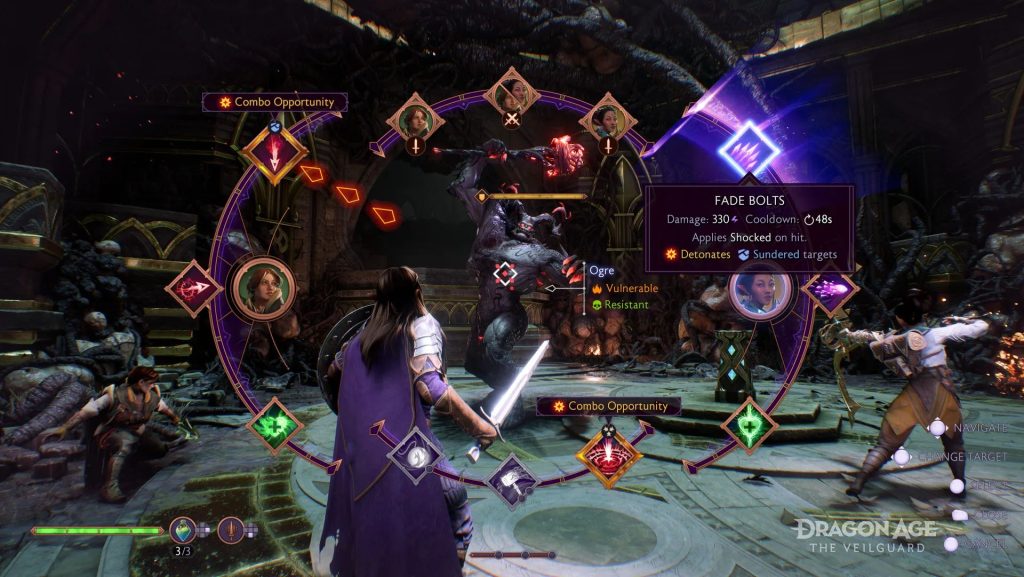
Combos look particularly fun to play around with thanks to the Primer and Detonator system. This is where party dynamics get their time to shine, as you’ll be priming targets with abilities like Crystallize just in time to command your party members to capitalize with a detonator move like Lucanis’ Eviscerate. What’s better is you can prime groupings of enemies and then take them all out with one fell swoop with a detonated AOE finisher from a party member. And then there’s your Ultimate abilities, which look really cool. I’m partial to the Meteor Ultimate, which summons a sizable array of meteorites to smite your foes.
The 3 classes are managed in smart ways as well, with unique methods to speed up ability cooldowns complementing each. The Warrior class builds up their Rage ability through all the blocking you’ll be doing, while Rogues pull off a string of dodges and parries to accumulate Momentum. Each class feels unique, hosting different skill trees, Ultimate abilities, and roles (like DPS, Mage, etc,) in combat. Combat is more streamlined to facilitate smooth action, yes, but it’s still got the tactical pause that pulls up the Ability Wheel. The Veilguard‘s ability wheel allows lets you command teammates to target enemies, initiate in team combos, or manually select abilities.
I admit, I am curious as to why there’s only 4 equippable ability slots. I’d have thought a solo-controlled character would necessitate a far wider ability pool, but maybe you unlock more slots later down the line and what they’ve shown is early game stuff. All in all, the fine-tuned action combat here appeals more broadly to those outside the DnD RPG space, while still emphasizing strategy and build gameplay to keep its role-playing elements intact.
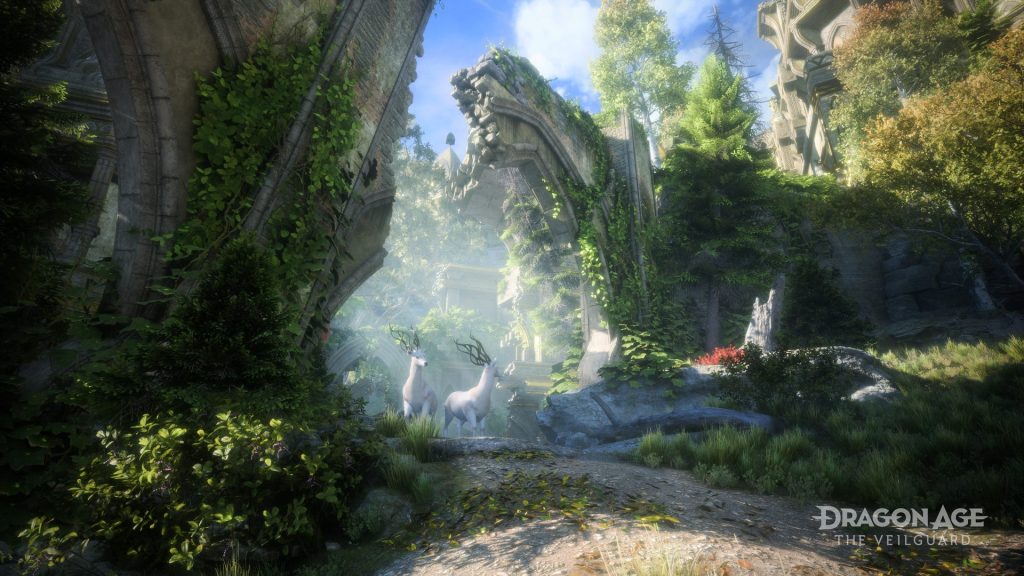
Another element they’ve tweaked is the open-world, or lack thereof. Bioware undoubtedly learned from their mistakes with Inquisition. The endless fetch quests and empty spaces within the Hinterlands in particular have garnered much fan backlash. By contrast, The Veilguard ditches open-world in favor of connected areas within a mission-based structure. This is a change I’m especially happy about, as modern games often feel compelled to go open-world just for trend’s sake and end up feeling empty and boring as a result. All the areas that we’ve seen from previews look lived-in and filled to the brim with intriguing characters and doodads.
That said, although main story quests and their associated locations follow a more linear path, there’s still free exploration within larger zones such as Arlathan Froest and Hossberg Wetlands; expect a host of side content ranging from collectathons to hunts and more. The mission-based structure is facilitated through a central hub called the Lighthouse which acts as your base of planning. It’s at the Lighthouse where you’ll decide which missions to go on and in what order; it’s also where you’ll be hanging out with your favorite party members, eventually going on companion quests with them. I’m looking forward to the more hand-crafted approach to mission design and environments and am curious if how the hub area changes throughout the narrative.
The “hub-and-spoke” design of the Lighthouse brings me to the characters that make up The Veilguard. Bioware games live and die by the characters and your relationships with them, and Veilguard looks to be taking that essence to heart. The Veilguard isn’t just the name of the game, it’s also the name of your plucky band of 7 companions. Each companion has their own living quarters within The Lighthouse, which they’ll upgrade and spruce up as the game progresses. Previews even say there’s a pop up sign in front of these quarters indicating that they have something new to discuss with you, giving me good memories of Mass Effect‘s Normandy.
As you get to know your companions better, you earn specific skill points which upgrade their skills and passive abilities, resulting in some neat story/gameplay integration. Your classic Bioware dialogue wheel is alive and well here. Although we’ve only seen 4 choices at most in gameplay snippets, I assume the choice paralysis comes in later in the narrative when you’ll be presented with many conflicting decisions in any given exchange. Your choices can get party members hurt and angry at you, which shows itself in the approval/disapproval system that keeps tabs on your relationship status with each companion.
One-on-one conversations with party members thankfully don’t have the abrasive hand-holdy dialogue that some of the other narrative in the game admittedly does. Folks who’ve played the game say these party member interactions are well done and on par with the Bioware of old, which is a fantastic sign. Bioware has always excelled in their party member relationships, and it looks like The Veilguard may supply that in a way that we haven’t experienced since…well, since Dragon Age Inquisition 10 years ago.
What really makes Dragon Age: The Veilguard stand out is its deep lore and story spanning over a decade of games and media. It’s disappointing that none of your choices from Origins or Dragon Age 2 carry over to The Veilguard, (yes, only three key decisions from Inquisition carry over), but the lore is kept consistent from what we’ve seen thus far. The main villains here, like Solas, have deep backstories with complex motives just begging to be explored deeper. These aren’t your generic basic braindead villains, but rather well-thought out characters built from a rich tapestry of lore spanning years. Even if I didn’t care for Solas’ intricate plot in Inquisition, it has good logic to it and opens up the lore a ton with its impressive historic complexity.

And maybe even the neon-lit color palette that The Veilguard touts has a lore reason to it too? Rifts are letting out floods of demons into Thedas as the boundaries between the Fade and the terrestrial realm get intertwined. The bright purples and violets may have a reason linked to this phenomenon, but even if they don’t, it’s a stylistic choice that facilitates advanced particle effects and 4K OLED UHD quite well, like it or not. Even with the Pixar animated film look and neon colors blasting everywhere, there’s still blood and gore spraying off of demons and whatnot, though it’s obviously toned down from Origins. I’m not a fan of the cartoony style, but I kind of get why they did it.
The Veilguard looks to be the most impressive Bioware game in many years, and shows more polish than Mass Effect Andromeda and doesn’t have the live-service trappings of Anthem. While I still have some reservations about the cartoony neon art style or the shift to more action oriented combat, The Veilguard looks like a comeback for Bioware, and that alone makes it one of the biggest games of 2024 considering the studio’s history providing the best stories and characters in gaming.
Note: The views expressed in this article are those of the author and do not necessarily represent the views of, and should not be attributed to, GamingBolt as an organization.








